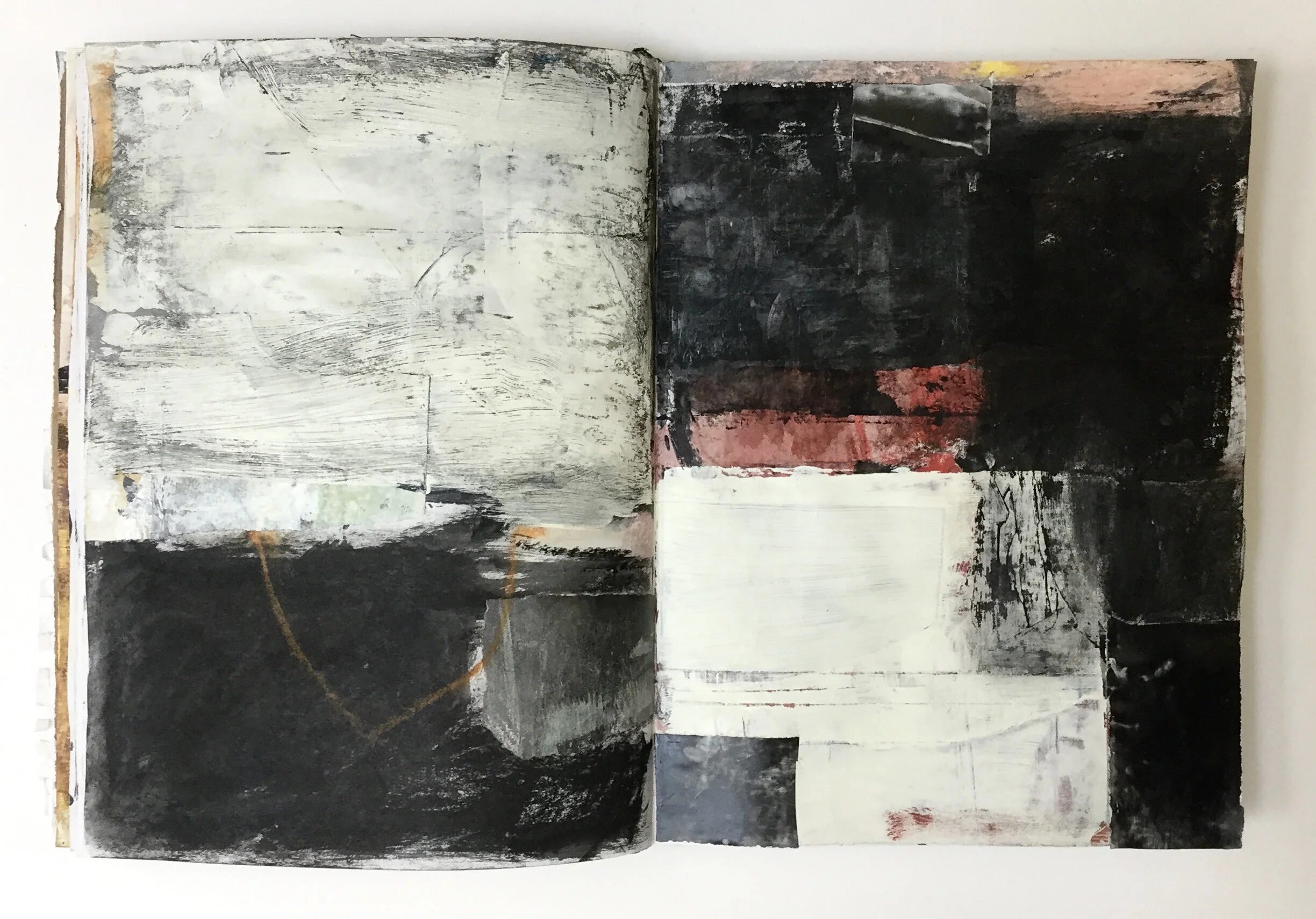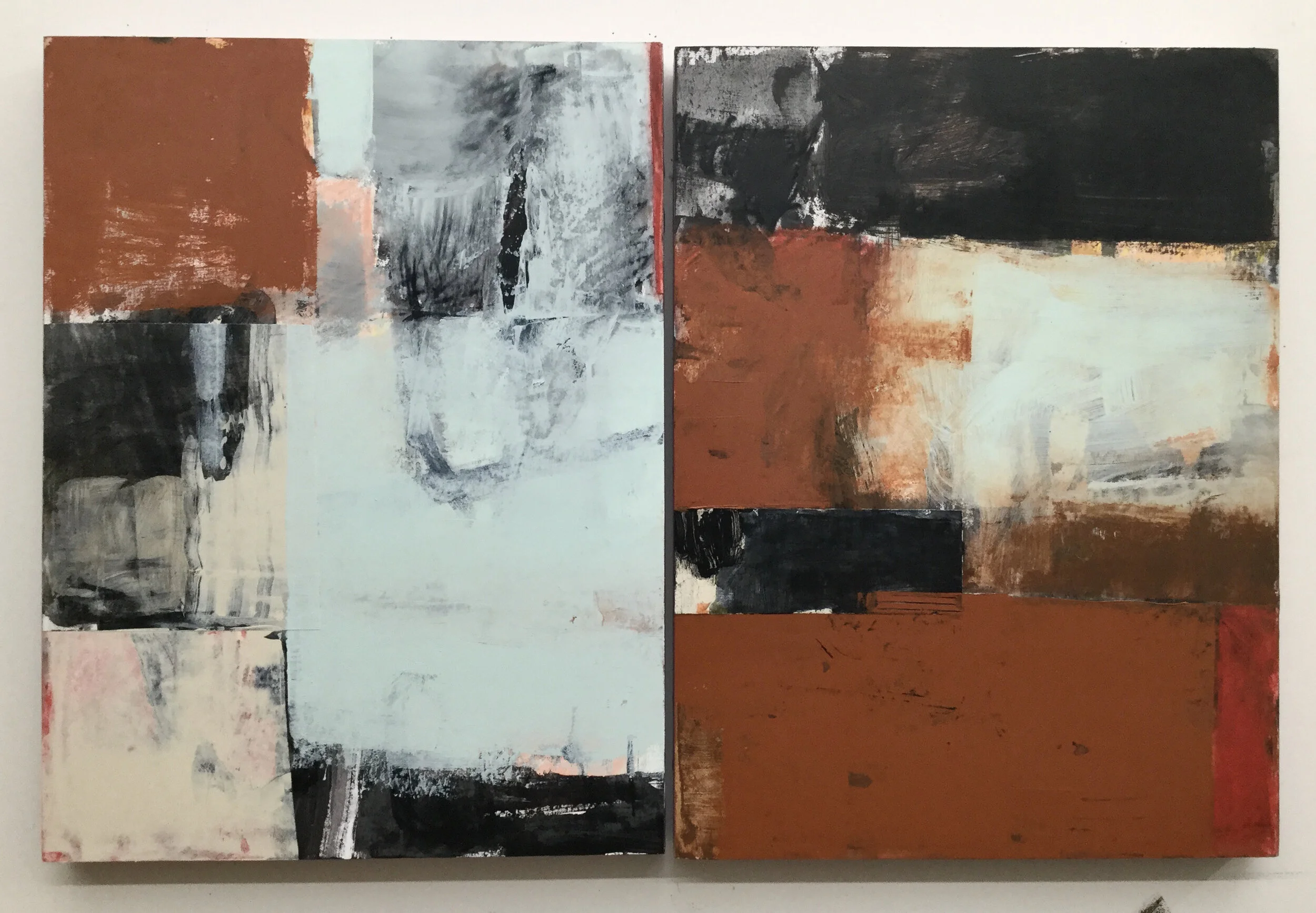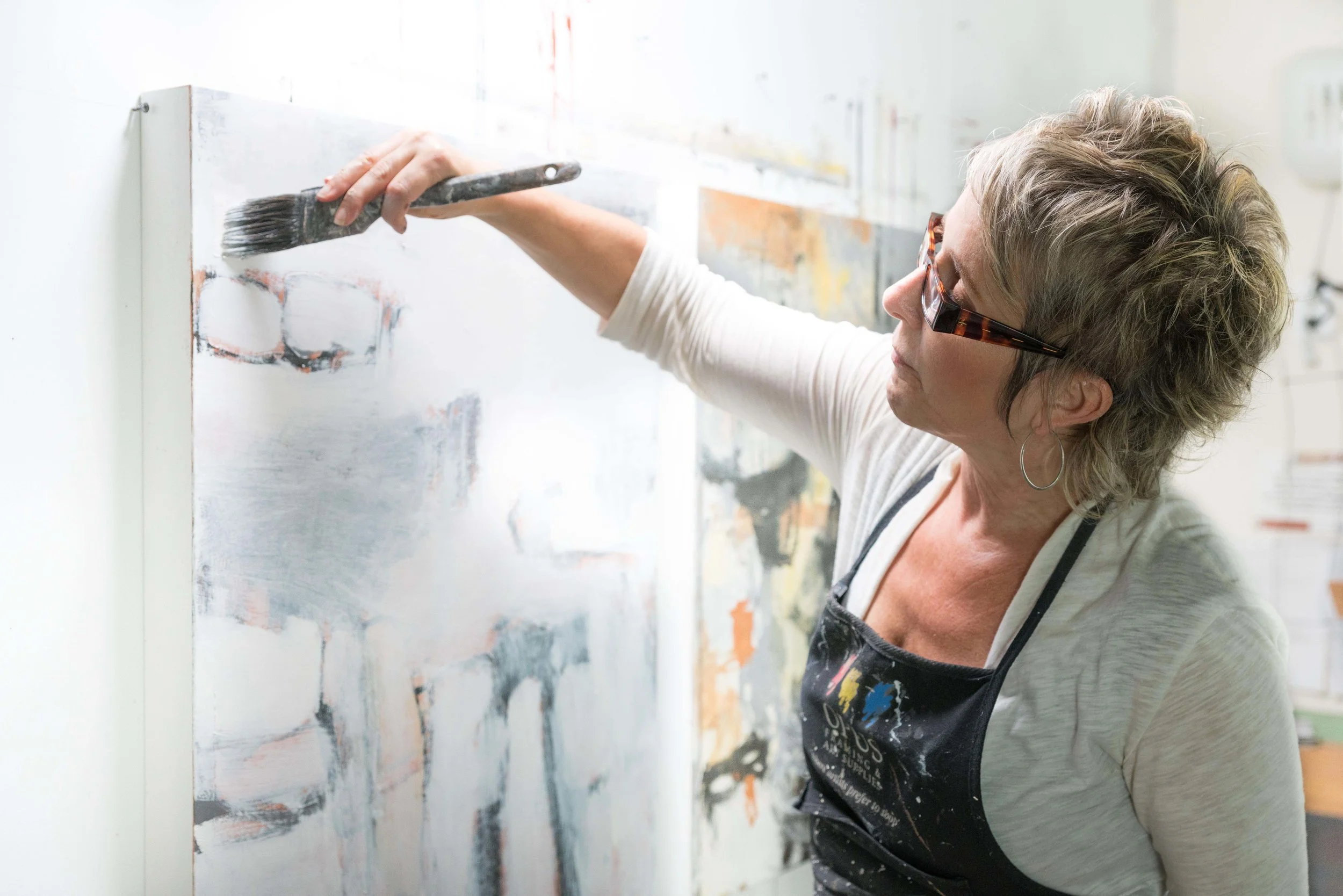SAYING GOODBYE TO 2020
/How do we say goodbye to a year like no other? How do our typical seasonal rituals of taking stock of the past year and making resolutions for the year ahead fit for us, given all we’ve been through together?
I’m sure there are many others considering this right now. Perhaps others are drafting similar blogs and trying to offer words of comfort or inspiration. But this year, everything we counted on and had come to expect was turned on its head, so why should we employ the same approaches to sending off 2020 and welcoming in 2021?
Yes, we want to return to feeling hopeful and as if things are returning to normal, but what is normal after all this? And, do we really want to return to that perceived normal? I do know we need hope to survive, so that is a worthy area to connect with during this transition out of 2020.
As an artist I spend a great deal of time in contemplation and disrupting so-called “normal.” I also negotiate the space of uncertainty on a regular basis, as the creative process is filled with unknowns and imminent failures. I work with quieting fear, as both an artist and as a coach to other artists. But 2020 brought forward a new level of fear for us. It brought forward instability, mistrust, inequality, hatred, and too much suffering and loss. It also brought forward courage, fortitude, patience and compassion. It really just depended on what you were looking at and paying attention to, as all of it was there for us to see.
2020 gave us a type of wake-up call that shook loose some of our belief systems and asked us to question what our lives are about and for. It may be some time before we are able to look back with dispassionate, curious eyes and see the truth of this time and experience the learning it may have to offer us. For now, we stay the course, manage as best we can and, as much as possible, accept what we cannot change...but change what we can. Using our discernment and wisdom to know the difference.
In thinking about how I might construct my own ritual for this marker in time – the arrival of a New Year – celebration doesn't feel quite right. I’ve been asking myself, “What, exactly would I be celebrating?” While others may feel differently and are looking forward to ringing in the New Year with some joyful times, I’m noticing that I feel more reflective and like I want to learn something from all we’ve been through this past year. I often reflect on the year that is passing, but this time I feel as if I haven’t had enough distance just yet to do it in the same way I always do. But at this moment two words feel very present for me – curiosity and compassion.
I am curious to lean into the lessons of 2020. And, I am meeting myself with the deepest compassion for my attempts at processing something so profoundly life altering. I’m not likely to “get it” at this time – and perhaps never will – but I will begin the pursuit anyway, because that feels like forward movement. And as the writer and poet Victoria Erickson says so eloquently:
“Remember forward movement. Forward is the way of trust. Forward is the way of forgiveness. Forward is the way of action. Forward is the way of healing. Forward is essentially the way of life.”
In an attempt to begin to assimilate some of what is changing within me as everything around me has changed, I have decided to write a letter to 2020.
Dear 2020,
You have unsettled me and challenged me in ways I haven’t had to experience before. You opened up wounds for me and for others. You called me to realize even more deeply the fragile condition of our humanness. You dealt blow after blow of “shit storm” crazy that terrified me. You isolated those I love and caused them to suffer. You made us sick and brought forward how we respond when our most basic needs are threatened.
2020, you have caused belief systems to crack, institutions to fall, and the pain and suffering of others to be in our hands and our hearts. You’ve called us to our responsibility as an inhabitant of this planet, and you have reminded us that we don’t own anything. You have asked us to continue to hold space for each other, even when we didn’t know if we could hold it for ourselves.
Through all of this I have learned some things about myself, and I expect I’ll be learning much more. I have come to know that I have biases and privilege that I can be blind to. Truth is strange in how it can be altered by these beliefs and blind spots. I am grateful for this and will continue to remain aware of these places in me that instinctively protect and preserve what I believe to be true.
I have also learned that when I am stressed and in uncharted territory, old patterns reappear and bad habits reemerge. Rather than condemn myself for not doing better when I know better, I have learned to offer myself more compassion. I am a flawed human trying to function when I don’t know how just yet. I have learned that I can give myself a break.
There are all kinds of people in this world and we each believe that our way is the best way for us, otherwise we wouldn’t be doing what we’re doing. I have learned I can be judgemental of others, even as I practice not being so. When I can’t understand why someone would choose an action or path forward because it’s so different than what I might choose, I need to be curious as to their nature, and mine. When I judge, I close down curiosity. I can be of better help to myself and others when I understand more.
And there are harms acted upon others that deserve our righteous judgement. I have learned I can still stand up for my rights and the rights of others while remaining curious as to how we got here.
As we have all been looking for comfort in this stressful year, I have been reminded that this means different things to each of us. I love being alone but others don’t. Comfort is personal and I shouldn't project my idea of what comfort is onto others, but instead be curious about what helps them. As a coach I am very aware of the fact that my answers are mine, and not necessarily my client’s. Because of this, I can be better at helping them to find their own answers. Putting aside my own ideas of comfort, I can create a space where self-help can be discovered in time. Patience and a willingness to remain in the discomfort of sitting with another’s suffering is what’s needed. I can be better at that.
When I am in pain, I need to stop and give to myself. Taking the time to move, create, dream and love is healing. The pain tells me I am out of balance and my body’s wisdom should be trusted over my mind. The mind is an endless taskmaster, always measuring, calculating and problem-solving. It is not the best advisor in times of suffering. I have learned to trust the messages from my body more than ever, and when I honour what it needs, the whole of me feels better.
2020, you have provided me a whole other level of fear to work with this year, and I am grateful for the mindset work I do as an artist and a coach to help guide me through this time. I often speak of our fears being tied to our primal and primitive responses – fight, flight or freeze. For the most part the fears we encounter in the studio and our daily lives are not real fears that threaten us in the way that our brains were wired for, so we have an inappropriate response to them. But this year our lives actually felt threatened and I learned about our surge capacity and how that gets tapped out pretty fast in an on-going situation like this. I have learned what ambiguous loss feels like – loss that continually cycles us through the stages of grief as we endure another hit. I have learned that resilience is about softness as much as it is about strength. The softening of our hearts towards ourselves, when we just can’t manage, is the way through the next wave of loss.
Those that have experienced trauma in their lives are particularly challenged right now. We need to extend so much compassion to ourselves if that is part of our history, and to those around us who may not be coping as well with so much uncertainty. I have learned to meet myself where I am, not push away because I shouldn’t be here; to nurture the place in me that feels vulnerable and needs to know it’s safe to trust.
I am accepting that I am doing my best, and my best looks different on any given day. If my wells are dry, I need to replenish and I may not be at my best that day. Can my perfectionistic, people-pleasing nature accept that? I have learned that part of me likes to compare and then condemn me for not doing enough, not being more engaged, or not being super productive with this time and space that has arrived through repeated lockdowns and isolation. I am learning to tolerate the discomfort that I feel when I want to do so much more, but I simply can’t. I am learning to accept that this doesn’t make me a bad person and that I can effect change in other ways. I can gently pursue hopefulness even when, at times, I feel hopeless.
Perceptions form so much of our experience and artists love to call our perceptions into question. I am embracing this challenge for myself and asking, what if 2020 was a teacher for me? What if everything that has occurred is asking me to consider my perceptions of what is valuable and important? What do I want from myself, others, this life? Has 2020 brought that more clearly into focus for me?
I have learned that even as an artist and coach, and knowing the value of questioning our perceptions, I still long to be “right.” I am attached to my beliefs and systems of attributing value. If I give some of these up, what do I replace them with? In the in-between of letting go and new understanding, there is a vast cavern of disruption to what I give meaning to. I feel as if I am free-falling and I am most challenged at that time to trust.
And, I am re-establishing my relationship to trust – moving what I think trust is from an idea to an experience. For me, trust is knowing that I will be okay no matter what happens – that my ability to manage my internal mechanisms is strong and I can depend on that. This gives me the greatest hope. I will always be there for myself, doing the work I need to do to understand more and to extend compassion towards the struggle of my humanness.
I am accepting the truth that pain is inevitable in this life - it is the suffering that is our responsibility. We can, and should, feel deeply...our emotions are our built-in guidance system. When we trust ourselves to meet our feelings without shame or rejection, they guide us to our truth and help us grow. Our suffering is often in the rejection of those feelings; the outright denial that they exist for us, or that we shouldn’t have to experience what we’re experiencing. When something hurts us deeply, we feel the pain of it, and we take action where action is needed. The suffering occurs after, in what we do to ourselves through the repetition and recirculating of the hurtful event. It’s the endless playing of the tape, in a futile attempt to rewrite it, that causes us to suffer. Here, again, acceptance of our perfectly imperfect selves is so important.
So, 2020, perhaps we can meet you with heaps of compassion for all that we endured, uncovered, and experienced; for all that we learned and decided needs to change. And, like me, if you’re still sorting that out, then let 2020 teach you how to meet yourself where you are. Extend the most heartfelt compassion towards your fragile self that is struggling in the vast cavern of the unknown. You don’t have to know what it all means for you now, you just have to trust that you will in time.
Moving into 2021 there is only one word that feels relevant for me, and that is nurture. My only commitment that I am making for this New Year is to nurture – myself, others, the whole of everything that is occurring and has occurred. We heal when we are supported and nurtured, and it feels like, as we enter 2021, we could all use some healing.
I am committing to nurturing my life into fullness and connection, regardless of what might be occurring in the external world. My inner world is a respite and a place of restoration for me.
I am nurturing my creative spirit to soar beyond the limits of my mind. I easily shift and clear away any and all of the residual rules, limitations, and thought patterns that stall my process and cause me to doubt myself. And, I nurture myself when I am not able to do this in every moment.
I am nurturing my body to be stronger and more vibrant as it continues to change with age. I am listening to my body’s wisdom and trusting that guidance. More movement and space arrives as a result, which provides me with ample energy to meet whatever comes.
I commit to nurturing friendships, family and loved ones – both in how I give love to others and how I receive love. I will reach out for help when I need it, and not live in a false belief that my needs take up too much space for others. When I receive, I have more to give.
I am nurturing my relationship to time and how I use it. I nurture and create space – in my body, in my mind, and in my life. This space I create has a direct relationship to my experience of time. It slows when I become more present and speeds up when I lose connection to my truthful needs.
Because of all the ways in which I give to myself, I am able to help heal the wounds of this time. I can afford to give some of my resilient strength to those that most need it while keeping enough for me to continue.
I am committing to nurture my abilities as an artist and a coach, building on everything that 2020 has shown me and what I have learned about myself as a result. I will nurture any fear that arrives as I push at my growing edges in my art-making and in my coaching practice. I will meet fear as a call to love – a spotlight on where I am attached, unsure, and tender. Here is where I will bring the full force of my nurturance and compassion. I will recognize that 2020 was a year that showed me what I am capable of and how adaptive I can be. I will not waste the teachings of such a challenge.
Goodbye 2020. You brought forward much for me to work with and learn. I will not pretend that this was an amazing opportunity that I feel deep gratitude for, just yet. That would be untruthful. As I write this, too many are oppressed, suffering and dying. There is still so much division and struggle to agree on what the truth is. I feel unsettled and called to myself more than ever – for that I am grateful.
Hello 2021, may you bring us some hope – not a miracle, just a little hope. May you give us a bit of breathing space to loosen our grip and begin to listen to each other again. May you gently nudge us towards the answers we need and may you remind us of our compassionate natures, our interconnectedness, and the value of a life. May our nature return to nurturing all there is.
Prefer to listen? Click on the link below to listen to and/or download the audio version of this Blog post.























